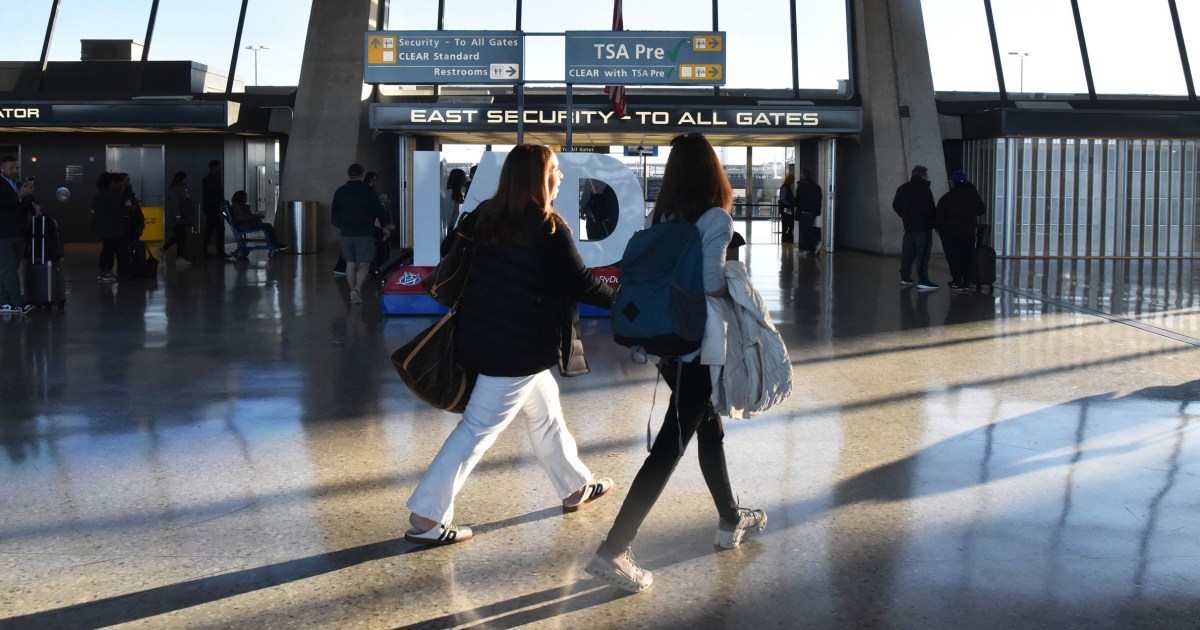President Donald Trump on Wednesday night signed a bill that reopened the government after 43 days, paving the way for airlines to restore regular flight schedules and air traffic controllers, who have not been receiving pay as they worked through the shutdown, to return to work.
But it remains unclear when full flight schedules and paychecks will be restored after the Federal Aviation Administration was forced to mandate flight restrictions at 40 high-traffic airports last week. On Wednesday night, the FAA ordered that cancellations would remain at 6% on Thursday, after two days at that rate and an initial plan to ramp up to 10% by Friday.
As of Thursday morning, nearly 1,000 flights within the U.S. had already been canceled for the day, and more than 900 were delayed, according to flight tracking website FlightAware. On Wednesday, only 900 flights were canceled — the lowest number since the FAA flight reductions began.
It is not immediately clear if the flight disruptions were all connected to staffing issues.
Airlines have said they are ready to ramp up as soon as they receive government clearance, which includes the FAA lifting the mandate on flight restrictions. And as soon as enough air traffic controllers return to work, ensuring that the increased number of planes can fly safely.
“As the federal government reopens and controllers receive their backpay, the FAA will continue to monitor staffing levels and review key trend lines,” Transportation Secretary Sean Duffy said in a Wednesday statement.
It’s promising that staffing triggers have decreased in the last few days, after weeks when controllers were calling out “stressed” under the pressure of working without knowing when their next paycheck would arrive.
Government officials have said that air traffic controllers are expected to receive about 70% of their missed pay within 48 hours of the government reopening, with the remaining 30% coming within the week.
Airlines cannot cancel and then un-cancel flights, so they need every puzzle piece to fall into place before the schedule returns to normalcy.
Delta CEO Ed Bastian said on CNBC on Wednesday that he thinks flights will return to normal by the weekend. Southwest said in its statement, “We’re optimistic that the FAA will allow airlines to resume normal operations within a few days.”
Fortunately, fears of an especially messy Thanksgiving travel week — when 31 million Americans are set to fly — have been thwarted, as airlines are ready to go more quickly than previously thought.
Even when flights are operating at 100% again, however, the issue of understaffing at air traffic control locations nationwide remains.
The industry still needs more than 3,000 air traffic controllers to fill staffing gaps and ensure that employees — many of whom were already working six-day workweeks before the government shutdown — can return to business as usual.
“When the government is funded again nothing will change at BNA,” said Garld Graves, a retired air traffic controller with 28 years of experience, referring to Nashville International Airport
“What the agency has been doing because of the shutdown — cutting flights, approving staffing triggers — is something that should have been happening all along at places that are short staffed,” he told NBC News.
He said he hopes that the FAA and Duffy “will continue to argue, fuss and fight, like they have promised during the shutdown, to create better opportunities to improve staffing levels and give controllers what they deserve.”
Airlines for America, the trade association representing major U.S. airlines, echoed Graves’ wishes and called on Congress to “ensure future funding bills do not allow aviation to become collateral damage in Washington’s policy debates.”
“The FAA’s Airport and Airway Trust Fund currently has $5 billion that could be used to pay air traffic controllers during future shutdowns,” the organization said in a statement. “We ask Congress to consider legislation that would implement a long-term solution.”

